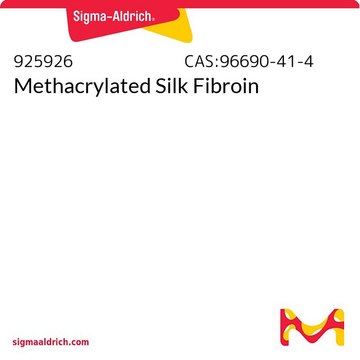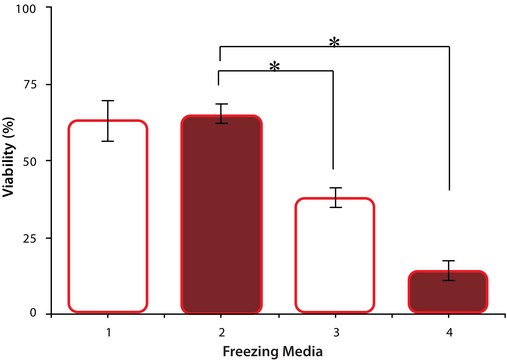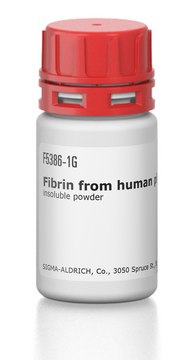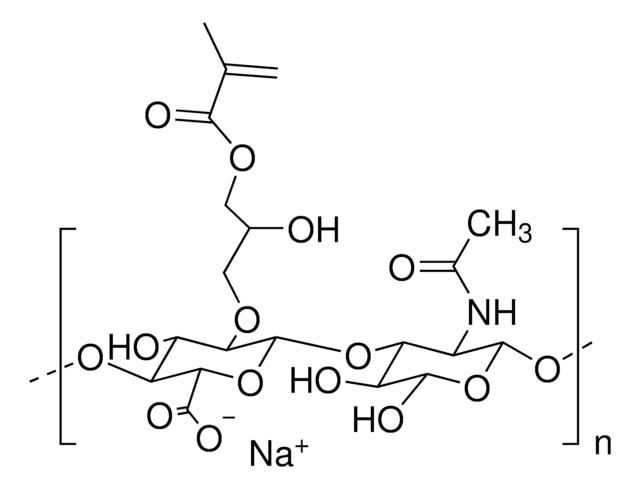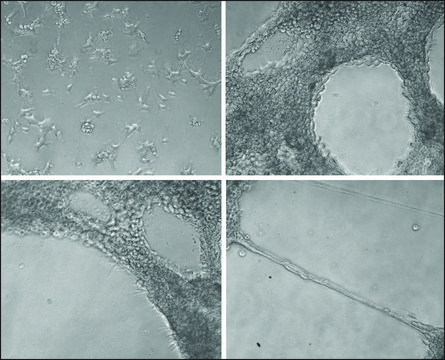推荐产品
分子量
average mol wt 100 kDa (water soluble)
质量水平
颜色
white to off-white
pH值(酸碱度)
6-8 (2% in water, when dissolved in water)
一般描述
Silk is a natural polymer composed of two proteins - fibroin and sericin.
Silk fibroin is used in biomedical applications due to its enhanced biocompatibility and biodegradability.
Silk fibroin (SF) demonstrates enhanced strength and stability compared to other common natural polymers due to its unique features including;
Silk fibroin is used in biomedical applications due to its enhanced biocompatibility and biodegradability.
Silk fibroin (SF) demonstrates enhanced strength and stability compared to other common natural polymers due to its unique features including;
- amphiphilicity
- hydrophobicity
- substantial hydrogen bonding
- intrinsic low viscosity
- high protein crystallinity by ß-sheet crystals.
应用
SF is a versatile material, that finds itself in multiple types of scaffolds, with extensive uses in inkjet, extrusion-based, laser-assisted, and DLP bioprinting tissue engineering applications.
包装
1 g in glass bottle
储存分类代码
11 - Combustible Solids
WGK
WGK 3
法规信息
动植物源性产品
Xiaohui Zhang et al.
Advanced drug delivery reviews, 61(12), 988-1006 (2009-08-01)
Electrospinning is a versatile technique that enables the development of nanofiber-based biomaterial scaffolds. Scaffolds can be generated that are useful for tissue engineering and regenerative medicine since they mimic the nanoscale properties of certain fibrous components of the native extracellular
Precisely printable and biocompatible silk fibroin bioink for digital light processing 3D printing.
Kim S H, et al.
Nature Communications, 9, 1620-1620 (2018)
Heesun Hong et al.
Biomaterials, 232, 119679-119679 (2019-12-23)
Three-dimensional printing with Digital Lighting Processing (DLP) printer has come into the new wave in the tissue engineering for regenerative medicine. Especially for the clinical application, it needs to develop of bio-ink with biocompatibility, biodegradability and printability. Therefore, we demonstrated
Soon Hee Kim et al.
Nature communications, 9(1), 1620-1620 (2018-04-26)
Although three-dimensional (3D) bioprinting technology has gained much attention in the field of tissue engineering, there are still several significant engineering challenges to overcome, including lack of bioink with biocompatibility and printability. Here, we show a bioink created from silk
我们的科学家团队拥有各种研究领域经验,包括生命科学、材料科学、化学合成、色谱、分析及许多其他领域.
联系技术服务部门
